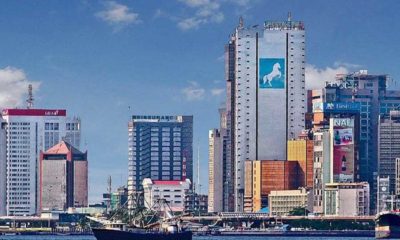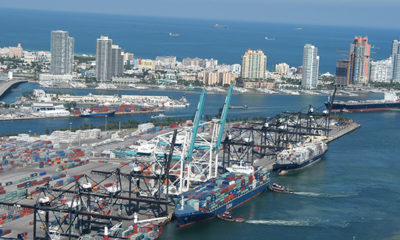- IMF: Nigeria’s Economic Growth to Overtake South Africa Next Year
The International Monetary Fund (IMF) on Monday predicted that the Nigerian economy would expand by 1.9 per cent in 2018, higher than the 1.2 per cent it estimated for South Africa.
In addition, the multilateral institution projected that Nigeria would exit the biting economic recession this year with a slim economic growth of 0.8 per cent, just as it predicted that South Africa, would also record one per cent growth in its Gross Domestic Product (GDP) this year.
The fund made the predictions in its World Economic Outlook (WEO) for July 2017, titled: ‘A Firming Recovery,’ that was obtained on its website.
The Nigerian economy sank into its worst economic recession in 29 years last year and has seen government pursuing expansionary fiscal policies to reflate the economy.
Similarly, South Africa entered recession for the first time in eight years in 2017; data from Statistics South Africa had shown last month.
But the latest WEO stated that in sub-saharan Africa, the outlook remains challenging.
The report anticipated growth in the continent would rise in 2017 and 2018, but would barely return to positive territory in per capita terms this year for the region as a whole—and would remain negative for about a third of the countries in the region.
“The slight upward revision to 2017 growth relative to the April 2017 WEO forecast reflects a modest upgrading of growth prospects for South Africa, which is experiencing a bumper crop due to better rainfall and an increase in mining output prompted by a moderate rebound in commodity prices.
“However, the outlook for South Africa remains difficult, with elevated political uncertainty and weak consumer and business confidence, and the country’s growth forecast was consequently marked down for 2018,” it added.
It urged Nigeria and other commodity exporters to continue to adjust to lower revenues, while diversifying their sources of growth over time.
“Oil prices have receded, reflecting strong inventory levels in the United States and a pickup in supply. Headline inflation also generally softened as the impact of the commodity price rebound of the second half of 2016 faded, and remains at levels well below central bank targets in most advanced economies.
“Core inflation has remained broadly stable. It has largely been stable in emerging economies as well, with a few, such as Brazil and Russia, witnessing strong declines.”
According to the report, capital flows to emerging economies have been resilient in the first few months of 2017, with a notable pickup in non-resident portfolio inflows.
It noted that while risks around the global growth forecast appeared broadly balanced in the near term, they remained skewed to the downside over the medium term.
“Projected global growth rates for 2017–18, though higher than the 3.2 per cent estimated for 2016, are below pre-crisis averages, especially for most advanced economies and for commodity-exporting emerging and developing economies.”
The report stated: “Among the former, many face excess capacity as well as headwinds to potential growth from aging populations, weak investment, and slowly advancing productivity.
“Reforms to boost potential output are of the essence, and slow aggregate output growth makes it even more important that gains are shared widely across the income distribution,” it stated.
According to the report, financial stability risks needs close monitoring in many emerging economies.
“Short-term risks are broadly balanced, but medium-term risks are still skewed to the downside.
“Lower commodity prices would further exacerbate macroeconomic strains and complicate adjustment needs in many commodity exporters.”

 News3 weeks ago
News3 weeks ago
 Business3 weeks ago
Business3 weeks ago
 Technology3 weeks ago
Technology3 weeks ago
 Investment3 weeks ago
Investment3 weeks ago
 Banking Sector3 weeks ago
Banking Sector3 weeks ago
 Banking Sector3 weeks ago
Banking Sector3 weeks ago
 Appointments3 weeks ago
Appointments3 weeks ago
 Investment3 weeks ago
Investment3 weeks ago





























